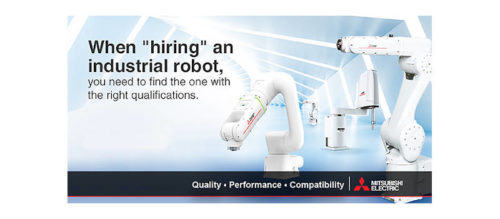Robot orders decline in Q2 2023
Robot orders in North America declined for the second quarter in a row after record highs in 2021 and 2022.
Robotics insights
- 北美市场经历了机器人a significant decline for the second consecutive quarter due to a sluggish U.S. economy and high interest rates, resulting in a 37% drop in robot orders and a 20% decrease in value in Q2 2023 compared to the same period in 2022.
- Despite strong interest in robotics and automation, the North American market saw a 37% reduction in robot orders and a 20% decrease in value during Q2 2023 compared to Q2 2022 due to economic slowdown and high interest rates.
A slow U.S. economy and high interest rates have taken a toll on robot orders in North America, resulting in a decline for the second quarter in a row after record purchases in 2021 and 2022. According to the latest report from the Association for Advancing Automation (A3), companies ordered 7,697 robots valued at $457 million from April to July 2023, a 37% decline in robot orders and 20% drop in value over the same period in 2022.
While robot orders declined overall for the second quarter in a row, non-automotive customers ordered more robots during that timeframe than automotive customers, demonstrating the value perceived by a growing number of industries.
When combined with first quarter results, the robotics market in North America is down 29% compared to the first half of last year with a total of 16,865 robots ordered. This drop comes after a record 2022, where North American companies ordered 44,196 robots, up 11% over 2021, the previous record.
“Over the last five years, we’ve seen a steady acceleration of robot orders as all industries have struggled with a labor shortage and more non-automotive companies recognize the tremendous value automation provides,” said Alex Shikany, vice president of membership and business intelligence, A3. ”After this post-COVID surge, however, we’re seeing a drawback in purchases, exacerbated by the slow economy and high interest rates. While many companies continue to automate, others just don’t have the capital to invest right now, despite their struggle to find workers willing to do many of the dull, dirty and dangerous jobs that remain unfilled.”
The ongoing labor shortage, especially in manufacturing (down another 2000 jobs in July, according to the U.S. Bureau of Labor Statistics) remains a key driver of automation. An increasing trend towards reshoring tasks here in North America is another contributing factor.
“Record attendance at tradeshows such as Automate in Detroit this year show even greater interest in robotics and automation than ever before, but as these numbers show, not all are ready or able to pull the trigger just yet,” said Jeff Burnstein, president of A3 in a press release. “When the economy improves, however, the companies who have learned about the latest innovations in automation and how they can help them increase productivity, deal with labor shortages and get to market faster will be ready.”
Automotive vs. non-automotive robot ordering more equal
Non-automotive customers ordered more robots in the second quarter of 2023 than automotive customers, with 52% of units going to non-automotive industries and 48% going to automotive OEMs and component suppliers. Both categories were down compared to the second quarter of last year, however, with non-automotive orders down 21% and automotive orders down 49%. The strongest demand in Q2 came from the semiconductor & electronics industries, followed by life sciences/pharma and biomedical, plastics & rubber and metals, with automotive components, food & consumer goods and automotive OEMs showing the biggest drops.
Do you have experience and expertise with the topics mentioned in this content? You should consider contributing to our CFE Media editorial team and getting the recognition you and your company deserve. Clickhereto start this process.





